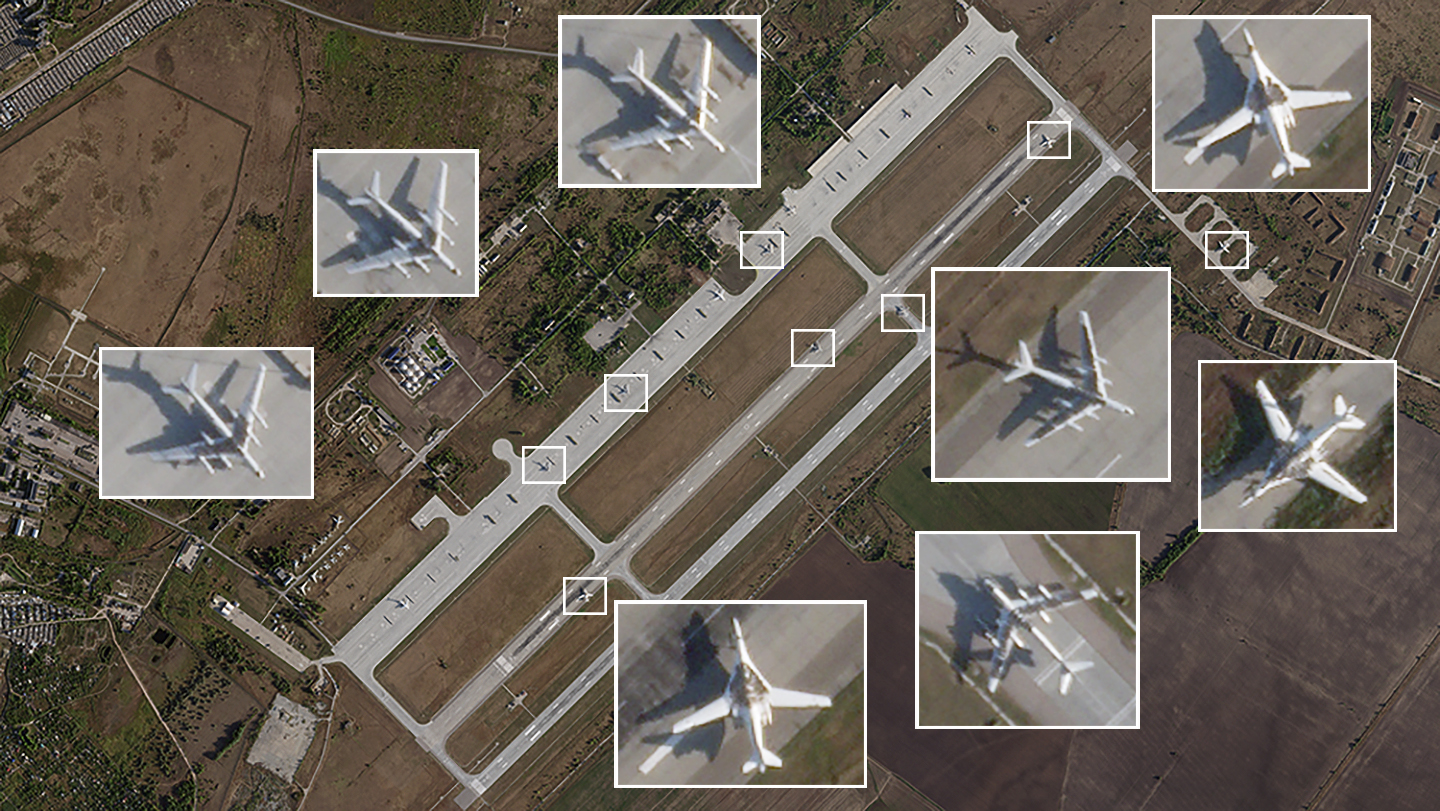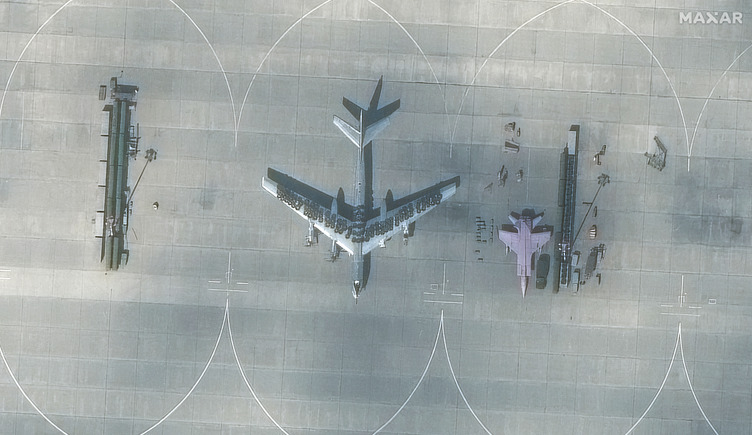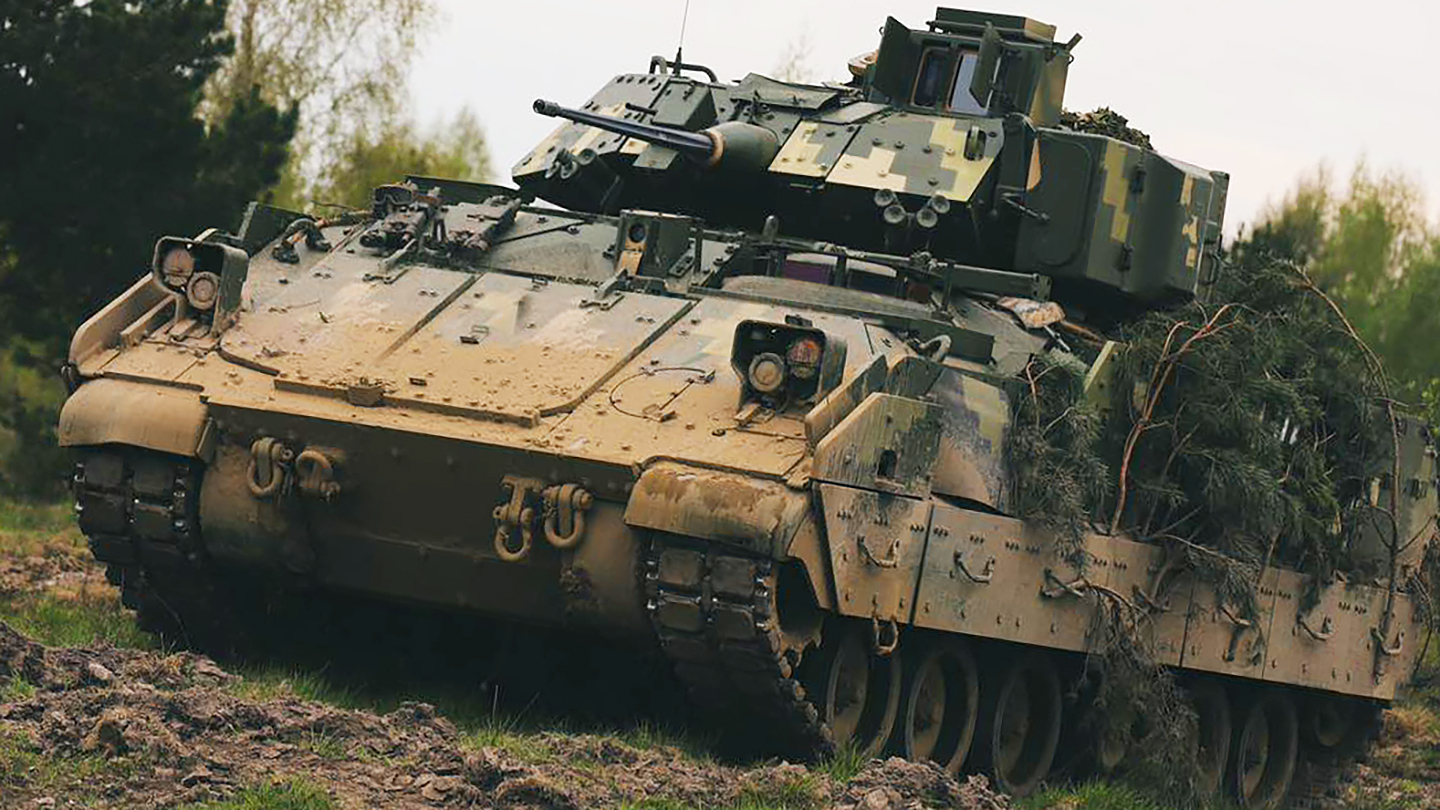Ukrainian forces are continuing to advance on the southern axis of its counteroffensive in western Zaporizhzhia Oblast, according to the latest assessment by the Institute for the Study of War.
“Geolocated footage posted on Sept. 5 shows Russian forces striking Ukrainian positions northwest and west of Robotyne, indicating that Ukrainian forces have advanced into an area near the settlement that Russian forces previously claimed to control,” ISW reported. “Additional geolocated footage posted on Sept. 5 shows that Ukrainian forces have also advanced south of Robotyne and northwest of Verbove (about 10km east of Robotyne).”
Geolocated evidence also shows Ukrainian forces have advanced northwest of Verbove, suggesting “that Ukrainian forces are advancing along the line of Russian fortifications that runs into the settlement,” ISW reported. “Ukrainian military sources also confirmed that Ukrainian forces have been successful in the Robotyne—Novoprokopivka directions south of Orikhiv.”
That assessment further confirms statements made on Saturday by Brig Gen Oleksandr Tarnavskiy in an exclusive interview with The Guardian that Ukraine has broken through the first of Russia’s massive defensive lines in that area.
“We are now between the first and second defensive lines,” he said, speaking to the Guardian in his first interview since the breakthrough. Ukrainian forces were now pushing out on both sides of the breach and consolidating their hold on territory seized in recent fighting, he said.
Tarnavskiy estimated Russia had devoted 60% of its time and resources into building the first defensive line and only 20% each into the second and third lines because Moscow had not expected Ukrainian forces to get through.
“In the center of the offensive, we are now completing the destruction of enemy units that provide cover for the retreat of Russian troops behind their second defensive line,” Tarnavskiy said.
For its part, the Russian Defense Ministry (MoD) on Tuesday said “aviation, artillery, and heavy flamethrower systems have repelled two attacks by the 47th Mechanised Brigade of the AFU” in Zaporizhzhia Oblast. However, the Russian MoD did not directly dispute the claims made by ISW and Tarnavskiy.
The Kremlin-connected Rybar Telegram channel, meanwhile, did dispute those accounts.
“The Ukrainian Armed Forces were unable to break through the defense line” in the Robotyne-Verbove sector, Rybar reported. “Moreover, by the evening information appeared about a successful counterattack by the Russian Armed Forces.”
All this reporting comes in the fog of war and it is impossible for us to verify any of these accounts. But the geolocated progress reported by ISW is a good indication that Ukraine is achieving a degree of success in pushing their fight forward through Russia’s heavy defenses.
Whether that will result in a successful push toward Tokmak or even further toward Melitopol before the rain and mud work to slow things down over the coming weeks remains to be seen.
Before we head into the latest news from Ukraine, The War Zone readers can catch up on our previous rolling coverage here.
The Latest
While officials in Ukraine are lauding the capture of Robotyne in Zaporizhzhia Oblast and the breakthrough of the first of Russia’s massive defensive lines, the troops who did the fighting there say the cost of small progress has been tremendously high.
“To fight and stay effective in this place you have to run after death, not let death run after you,” a 23-year-old storm group member with the call sign “Boyets” from the Skala Battalion, a special tasks unit fighting on the main axis of attack south of Robotyne, recently told The Times of London. “I am ready to die, only because I have to be.”
Boyets’s unit has already been reduced by casualties to 25% of its original strength since joining counteroffensive operations around the axis towards Robotyne in July, and the life expectancy of storm units is the shortest on the front, the publication reported, stating:
“Ninety percent of the guys here will die too,” added the young fighter matter-of-factly, looking around his comrades as the Skala battalion’s storm troops waited to receive orders for another night attack on Sunday. “We know that. Sure, we’ve breached the first line of the Russians but f***ing hell. What a cost.”
Speaking of the Ukrainian counteroffensive, the advance has been complicated by tens of thousands of mines placed by the Russians, who have the luxury of being able to concentrate fires on de-mining equipment. As a result, Ukrainian sappers have had to pick through mine fields by hand, usually at night. But new video has emerged of another challenge posed by Russia. The placement of live grenades under anti-tank mines, with their pins pulled. It’s a design created to blow up sappers working to remove the mines.
Ukrainian President Volodymyr Zelensky on Tuesday submitted a draft resolution to the Verkhovna Rada, Ukraine’s parliament, to appoint Rustem Umerov as the country’s new defense minister, the Kyiv Post reported.
Zelensky’s decision came after the parliament had approved Oleksii Reznikov’s resignation as defense minister earlier in the day, the publication reported.
The Ukrainian parliament is expected to consider the candidacy of Umerov — a Ukrainian politician and businessperson of Crimean Tatar origin who is also a former head of the State Property Fund — on Sept. 6.
Umerov also previously served as a member of parliament with the Holos party from 2019-2022. Zelensky announced his decision to dismiss Reznikov on Sept. 3, saying that “the ministry needs new approaches and other formats of interaction both with the military and with society as a whole.”
On Monday, we published satellite images that showed Russia was placing tires on the upper fuselages of at least five turboprop-powered Tu-95MS Bear-H aircraft and at least three examples of the swing-wing Tu-160 Blackjack bombers. Some tires on the Bears also extending further down the wings.

As we noted in our story:
“A covering of tires could well be calculated to break up the infrared signature of these aircraft, to confuse cruise missiles using image matching for targeting. This technique is also frequently referred to as DSMAC (Digital Scene Matching Area Correlator) or ATR (Automated Target Recognition) when used in cruise missiles. As we have previously discussed, using DSMAC/ATR would provide land attack versions of Ukraine’s homegrown Neptune missiles with a significant advantage, making them largely immune to electronic warfare jamming. At the same time, their approach to the target would not involve any telltale radio-frequency emissions, thanks to the passive nature of the targeting.“
On Tuesday, Maxar Technologies released even higher resolution images showing two Bears with tires on their wings and on the top of their center fuselages. Of additional note is that these images also show that some of the Bears are missing propellers. The exact status of these airframes remains unclear. Aircraft that require deep maintenance are stuck out in the open on the base and they cannot be flown out, putting them at higher risk of attack. Mothballed airframes could also be used as decoys, but that would be very limited in number.


The first of an eventual 40,000 rounds of 35mm ammunition for German-made Gepard self-propelled anti-aircraft systems donated by Germany is on its way to Ukraine, the German arms maker Rheinmetall announced Tuesday.
The news is important because there were significant concerns about the ability to provide ammunition for the 46 Gepards Germany has given to Ukraine. The vehicle’s guns were made in Switzerland, and authorities there have repeatedly refused to allow the re-export of 35mm rounds from various countries to Ukraine citing a policy of neutrality in regard to the conflict.
As a result, new production capacity for supplying the Gepard systems has been created in Germany, where a multi-million euro figure has been invested in plant and equipment, Rheinmetall said in a statement Tuesday.
Gepards have proven highly valuable in the point defense role, especially against long-range Kamikaze drones, among other threats.
The use of the once ubiquitous Turkish-made TB-2 Bayraktar drones by Ukraine has been significantly curtailed overall due to the fortification of Russia’s anti-air umbrella over and far beyond the front lines. But after an absence from the battlefield, the are starting to reappear in several places for Ukraine.
On Aug. 22, we reported that the Russian Defense Ministry claimed that a Bayraktar and an MQ-9 Reaper operating over the Black Sea close to Crimea changed course after Russian fighters were launched.
Since then videos have emerged showing the Bayraktar in action.
On Sept. 3, the Ukraine Weapons Tracker open-source intelligence group posted a video it said shows a Bayraktar destroyed a Russian Ural transport truck somewhere on the southern front.
That same day, both Ukraine Weapons Tracker and the Ukrainian Defense Ministry (MoD) posted identical video of a Russian KS-701 patrol boat and six of its occupants being destroyed. The Ukraine Weapons Tracker group claimed the strike was carried out by a Bayraktar and the MoD just said it took place somewhere in Kherson Oblast.
Russian authorities are pushing back against claims that Defense Minister Sergei Shoigu has ordered the mobilization of 200,000 more troops to fight in Ukraine.
On Monday, the Ukrainian Unian news outlet published a document on its Telegram channel it said purported to show that the mobilization effort would be enacted by Sept. 11 and completed by Nov. 1.
The publication, however, said it could not verify the document’s authenticity.
On Tuesday, Russian Defense Ministry spokesman Andrey Kartapolov called the document a “fake.”
“The information disseminated has nothing to do with reality,” Kartapolov said on his Telegram channel Tuesday. “Please trust only trusted sources.”
The Pentagon on Tuesday declined comment on reports that North Korean despot Kim Jong Un will make a rare excursion from his highly isolated country to visit Russian President Vladimir Putin in the coming week to discuss supplying more arms to Moscow in its fight against Ukraine.
“I don’t have anything specific to provide in terms of a potential meeting nor am I going to speculate on when such a meeting could occur,” Air Force Brig. Gen Pat Ryder, the Pentagon’s top spokesman, told reporters Tuesday.
Yesterday, The New York Times reported those plans, citing U.S. and allied officials.
“Kim would travel from Pyongyang, North Korea’s capital, “probably by armored train, to Vladivostok, on the Pacific Coast of Russia, where he would meet with Mr. Putin, the officials said,” according to the Times.
Ryder also declined to provide any information beyond what White House National Security Council spokesman John Kirby told reporters last week about Russia seeking materials from North Korea to boost its defense industrial base.
Speaking of North Korea, Moscow has suggested that Pyongyang take part in joint naval exercises with Russia and China, in what would be a first for the Kim regime, Financial Times reported Monday.
Joint naval drills would mark a new level of cooperation as tensions rise between the US and China and their respective allies in east Asia.
“Yoo Sang-bum, a lawmaker from South Korea’s ruling conservative party, said the country’s intelligence services believed Russian defense minister Sergei Shoigu had proposed joint exercises during a meeting with North Korean leader Kim Jong Un in July,” the publication reported. “Yoo said the proposal was discussed at a closed-door briefing to parliamentarians by South Korea’s National Intelligence Service. His account was reported by South Korean state news agency Yonhap on Monday and confirmed to the Financial Times by his office.”
Ryder also said he had didn’t have “anything to announce” about the provision to Ukraine of depleted uranium rounds designed to be used in the Abrams tanks that will likely arrive in Ukraine sometime this month.
Ryder was reacting to a question about a Reuters report from last week that the Biden administration will for the first time send controversial armor-piercing munitions containing depleted uranium to Ukraine. Reuters cited a document seen by its reporters and separately confirmed by two U.S. officials.
The rounds, which could help destroy Russian tanks, are part of a new military aid package for Ukraine set to be unveiled this week, according to Reuters. The munitions can be fired from U.S. Abrams tanks that, according to a person familiar with the matter, are expected be delivered to Ukraine in the coming weeks.
In March, the British government disclosed that it is sending 120mm tank ammunition containing depleted uranium (DU) to Ukraine for its Challenger 2 tanks. You can read more about those rounds and how they work in our story here.
Speaking of tanks, video emerged last week of a badly damaged Ukrainian Leopard 2A4 tank with Kontakt-1 explosive reactive armor (ERA). As we have reported before, we have seen Leopard 2 tanks covered with the bricks. Despite the damage, it appears that at least some of those bricks may have been activated, likely reducing some of the effects of whatever hit the tank, which still has its turret.
As you can see in this video below, about two dozen donated Leopard 2 tanks are seen with bricks located on the tanks’ flanks and turrets.
In a wide-ranging interview with Ukrainian journalist Nataliya Moseychuk Sept. 1, Ukrainian Maj. Gen. Kyrylo Budanov, commander of the Defense Intelligence Directorate (GUR), touched on several topics. The interview included discussion of his belief that Russia will not use nuclear weapons if Ukrainian forces enter Crimea. He also stated that tactical nuclear bombs have already been delivered to Belarus for use with their Flanker aircraft. He also stated that Ukraine has and will continue to interfere in Russian politics and that Russia will attempt to mobilize another 450,000 troops. He also claimed that China supplies Russia with dual-use items like drones and chips, but won’t provide outright weaponry.
The spy boss also said he will only talk about the GUR’s relationship with the late Wagner boss Yevgeny Prigozhin after the war is over.
The Soviet-era MT-LB tracked vehicle is widely used in many variants by both sides. In the video below, another version emerges of one with a Russian 2M-3 twin 25mm naval gun mounted on it. As you can see from the extreme barrel wobble as it fires, this system was likely designed to suppress Ukrainian fire as opposed to delivering accurate fire of its own.
More than 15 months after Ukrainian forces finally surrendered the Azovstal Steel Plant in Mariupol to the Russians after months of brutal fighting amid the facility’s labyrinths, it remains an ominous twisted mess, as you can see in this video below.
A longer video emerged on social media of a Ka-52 Alligator shot down in Robotyne last month by an RBS 70 man-portable air defense system (MANPADS) being used on the battlefield. Previous video that we posted at the time showed the end result but this video below purports to show the system being operated by Ukraine’s 47th Mechanized Brigade.
Much has been made of the tanks and other armor donated to Ukraine, but one of the unsung heroes when it comes to equipment has to be items like the U.S.-provided M88 Armor Recovery Vehicles, which have been instrumental in helping Ukraine salvage damaged equipment and eventually return it to the battlefield. The U.S. alone has provided 131 tactical vehicles to recover equipment, two of which you can see in this video evacuating damaged Leopard 2 tanks.
One of the greatest advantages of much of the armor donated to Ukraine by the U.S. and its allies is the ability to protect crews that come under Russian fire. Such was reportedly the case of this U.S.-donated MaxxPro Mine Resistant Ambush Protected (MRAP) armored personnel carrier, one of 500 promised or delivered. The video below shows the aftermath of reported strikes to the remote weapons station by bullets. It also claims the MRAP survived three rocket propelled grenades and was still able to leave the battlefield.
Ukraine has seen at least 61 MaxxPros, according to the latest figures from the Oryx open-source tracking group. Of those, at least 46 were destroyed, eight damaged, five abandoned and two captured. The actual loss figures could be higher because Oryx only tabulates equipment for which it has visual confirmation.
About a dozen or so Russian troops reportedly marched through the woods to surrender to Ukrainian forces near Klescheevka in Donetsk Oblast, which you can see in this video below.
And finally, this may seem like another video of fierce trench fighting near Bakhmut, but in reality it is a clash between Russian police and jade miners.
That’s it for now. We’ll update this story when there’s more news to report about Ukraine.
Contact the author: howard@thewarzone.com
